



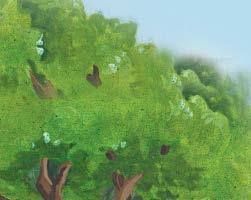
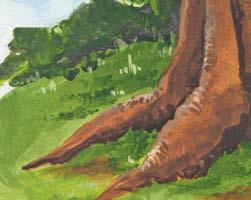







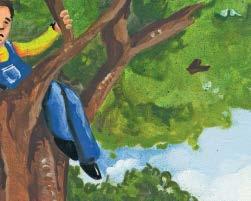




In this search she found TPRS (Teaching Proficiency Through Reading and Storytelling) which she considers is the most effective method that can be used for developing language competence and fluency in students today.



















In this search she found TPRS (Teaching Proficiency Through Reading and Storytelling) which she considers is the most effective method that can be used for developing language competence and fluency in students today.
As an accomplished, dedicated educator, and now author that she is, Patricia Lewis is considered an invaluable asset in the field of education, a passion that has been part of her life for over 45 years. She has spent these years of hard-work and dedication in the following positions:
• Classroom Experience: 17 years
To continue perfecting the method she has attended three National TPRS conferences held in the United States and has been part of the planning committee for three TPRS Panamá Chapter Conferences in Panama City. She plans to continue perfecting the implementations of this method in order to help improve the way second languages are taught in Panamá.
• Elementary Assistant Principal: 9 years
• Principal (current position): 21 years
At present, Patricia Lewis is the principal of the Instituto Episcopal San Cristóbal. She holds a Masters Degree in Linguistics and English as a Second Language. She has been the recipient of many outstanding awards and medals for her hard work in the community and in education. Mentionable are: The Vasco Núñez de Balboa and Manuel José Hurtado Medals of Honor in 2003 and 2008, respectively.
Throughout her years at theInstitutoEpiscopalSanCristóbal, she was able to gather a wealth of experience to support her writing endeavors. One of the most important tasks required while in this position was choosing on the proper didactic materials or textbooks to be used at different levels. She is also a consultant/presenter in a wide array of workshops, conventions and seminars. As of now, she acts as a member of the Board of Directors of the Panama Chapter of TESOL (Teachers of English to Speakers of Other Languages) of which she’s a former President. She has attended more than 250 related workshops and conferences, experiences that have provided her with a broad framework of references and acumen in the field.
Her years of professional and personal growth include several degrees and certificates of participation and/or of merit: Bachelor of Arts with a Major in Education, University of Panama; Master of Arts with a Major in Linguistics, Nova University; Second Language Acquisition; and her latest two: Doctorate in Education of English as a Second Language and Doctorate in Education from the University of Los Angeles.
Being an advocate for language teaching, language acquisition, and language learning, she constantly searches for the optimal language teaching methods. While on this search, she found TPRS (Teaching Proficiency Through Reading and Storytelling), which, in her opinion, is the most effective method for developing language competence and fluency in students today.
To continue perfecting the method, she has attended seven National TPRS Conferences held in the United States and has been part of the Planning Committee for three TPRS Panama Chapter Conferences in Panama City. She plans to continue perfecting the implementations of this method, in order to help improve the way second languages are taught in Panama.
“TPRS is the most effective method that can be used for developing language competence and fluency in students today.”
Patricia Y. Lewis
Currently, Patricia Lewis is the principal of InstitutoEpiscopal SanCristóbal . She has been the recipient of many outstanding awards and medals for her hard work in the community and in education, namely: The Vasco Núñez de Balboa and Manuel JoséHurtadoMedals of Honor in 2003 and 2008, respectively.
Professor Lewis is the author of various ESL books: An A to Z Adventure at the Zoo Student’s Workbook, An A to Z Adventure at the Zoo Short Readings, My First English Adventure Student’s Workbook, and the series TPRS New English Adventure (from levels one to six). All of these educational publications are accompanied by a step-by-step teacher’s manual and several visual aids, as illustrated big books for storytelling, flash cards, and audio compact discs with poems and songs.
TPRS NEW ENGLISH ADVENTURES WORKSHOPS
Each teacher will receive training on TPRS and training on how to get the best results possible from working with this text.
TPRS NEW ENGLISH ADVENTURES STUDENT’S WORKBOOK LEVEL 2
A complete workbook with stories developed with illustrations, vocabulary, exercises, and sight words for speaking, reading, role playing, asking, and answering questions.
CDS FOR LISTENING AND ORAL PRACTICE LEVEL 2
Each text is accompanied by a CD for listening and oral practices. The CD contains the full stories and all of the practice exercises that should be done orally first, then in written form.
CDS FOR CLASSROOM ILLUSTRATIONS LEVEL 2
Each text is also accompanied by a CD that contains illustrations of the vocabulary, the structures, and the sequence of events in each story.
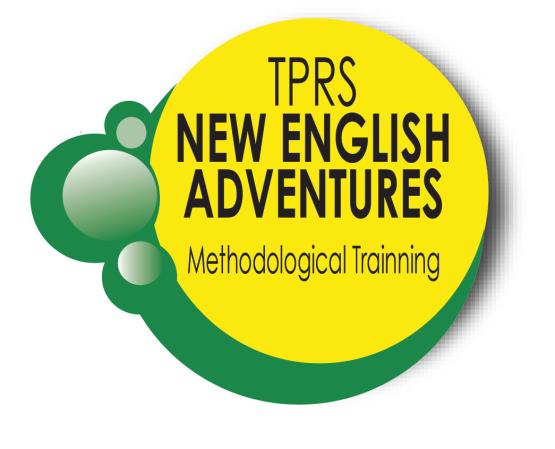
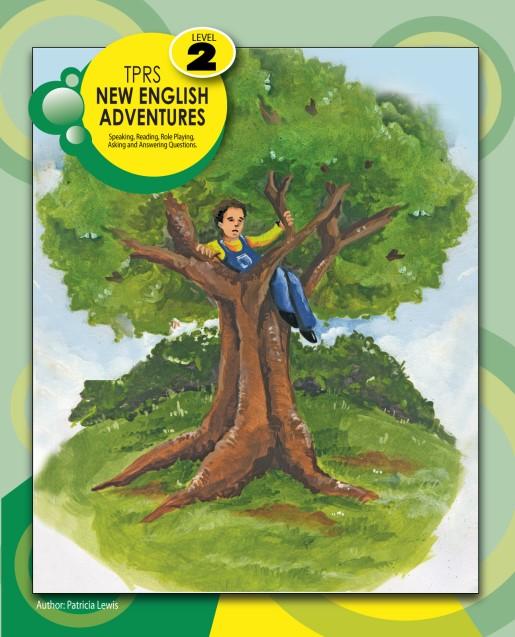


IIf you are looking for a text that helps your students stay engaged in their work at all times, develops their comprehension, works with vocabulary in context, follows a process to ensure language acquisition, addresses all learning styles and intelligences and helps students acquire grammatical structures among other things, then TPRS New English Adventures is the text for you.
This text is based on a methodology called TPRS which wascreatedby Blaine Ray inthe late nineties. According to him, this method is founded on the languageacquisitionhypothesisof Stephen Krashen, tempered in somebyrealities.
TPRS is developed upon three basic steps which are:
• Developing meaning
• Asking the story
• Reading
These steps enable the teachers to work on comprehension, repetition, interest and reading. As a result, students will be able to acquire the vocabulary and structures needed to increase their reading comprehension and language fluency. Each text has eight mini stories and eight full stories that include the basic vocabulary and structures that are used in the mini stories. The mini story is developed in the past tense. The full story, which may add a few other vocabulary words, is developed in the present tense. This technique increases students’ practice.
When using both tenses in sentences and stories, students will learn how to use them when using the language.
At the end of each story, there are a series of practice exercises that provide opportunities for comprehension development and proper or standard pronunciation. They also stimulate retelling, sequencing, and writing skills. We urge the teachers to take advantage of these suggestions to encourage their students to complete the written exercises in order to develop their writing abilities. In addition, we have included in all our readings a group of basic sight words that are found in all reading texts.
“We urge the teachers to take advantage of these suggestions to encourage their students to do the written exercises in order to develop their writing skills.”
To complement the text, we have prepared an audio CD which includes all the mini stories, main stories, and oral practice exercises that will reinforce students’ skills, listening, and speaking skills.
Practice the TPRS commands that appear in the story, and all other commands needed for comprehension of classroom instructions.
• Choose three structures from the mini story to establish meaning. Usetranslation,picturesor gestures.
• Circle, personalize and gesture the structures.
• As you circle and personalize the structures, present the other vocabulary words in the story.
• Add them to the basic structures, for students to become familiar with them.
• Use pictures, gestures or translations as you introduce them. Place them on the board in front of the class with their translations.
• Use the words several times.
The story is developed by asking about it, instead of telling it. Select a statement and ask questions related to it or in yes / no questions format. In order to get as many questions as possible, focus on the subject, the verb and then the complement. This can be done in any order.
Ask “Wh” questions, and in order to ask even more questions, add variables (other words) to the main statements. This will help provide more repetition. Every time you ask a “Wh” question, point to the word on the board with its translation. During this process, make a brief stop, personalize various structures and do introduce pop-up grammar. Ask questions to help the students understand the grammatical concepts.
The teacher or a student reads a statement or a paragraph. Individual students or the whole group translates the statement or paragraph. The teacher personalizes the story, circles various structures and gives some attention to pop-up grammar. After the story is read, complete the practice exercises in the text. First, develop the exercises orally; then, do them in written form (which could be used for homework).
6. POP-UP GRAMMAR
When you personalize, you relate the structures to a student in the class. Use questions to work with personalization.
It is called Pop-up Grammar, because of the brevity of the time element involved in the explanation of the concept.
This refers to the teacher evaluating the student’s progress in order to determine how he or she may help the student improve. Assessment is also used to help the teacher determine the student’s level of comprehension.
The Barometer Student helps the teacher to determine how effective the story was comprehended. Use it to know how good or bad you are doing your presentations.
Assessment is also used to help the teacher determine the student’s level of comprehension.
The three basic steps for developingTPRSstoriesare:
• Developing meaning
• Asking the story
• Developing literacy or reading
Withthese basicsteps, the teacher is able to work on comprehension,repetition, interestand literacy.
1- To begin, choose three to five structures or words.
2- Present the vocabulary words or structures to the class in written form or with pictures (beginners). Use gestures and translation to explain the meanings.
3- Ask yes / no questions pointing to the object, picture or word. Example: Isthisabook? Have students respond yes or no, or signal with their hands if the answer is yes or no.
4- Ask a “Wh”question
Example: Whatishisname?, Whoisthis? , or Where istheboy? Have students respond with a word or a phrase.
5- Continue to present the other structures or words, repeating the question forms indicated above.
6- Review the meaning of the words or structures, by asking the students to identify them by giving the meaning in Spanish, or acting out the words.
7– Personalize the words by asking the students personal questions with the vocabulary words. For example “dog”. Ask, Whohasadog?, Whatisitsname?, etc. “Likes to go” Ask: Wholikestogo to….?
8- Signal the grammatical structures, explaining briefly. Contrast them and signal the differences. Have students observe and repeat.
Examples:
Like: Helikestogo. Iliketogo. An example of this would be: “I like to go,” which means “Me gusta ir.” Show the gestures by rolling both hands.
Askquestionssuchas: Whatdoes “Iliketogo” mean?, Whatdoes “liketo”mean?, WhatdidI say?,andsoon.
9- Keep going back and forth with yes/no and “Wh” questions, and also use gestures to help students learn the meanings of the words and structures.
Sto-
Questions and strategies to guide the students to the content of the story .
1- Present statement by statement, orally or in writing. Observe the following example: There is a duck.
Isthereaduck?
Isthereadog? Istherea dogoraduck?Whatisthere?
Circling permits the teacher to work on repetition and motivation. Circling or asking questions should not be done in any specific order.
2- The teacher continues to develop or ask the story by using yes/no, and “Wh” questions. There should be approximately eight to ten questions per statement asked in any order. The teacher can also take the opportunity to signal grammar points, review gestures, personalize structures and assess comprehension of the structures.
3- To add repetition to the structures, the teacher can add a parallel character to the statement and ask the same questions, this time about the parallel character. Example: The name of a student in the class. Let’s say, if the story is about John’s car: John drives a Jaguar. The parallel character could be a boy named Peter. So, the statement would be Peter drives a Chevrolet.
John drives a Jaguar. Peter drives a Chevrolet.
• Does John drive a Jaguar?
• Does John drive a Chevrolet?
• Does Peter drive a Jaguar?
• Does John or Peter drive a Jaguar?
• Who drives a Jaguar?
• Who drives a Chevrolet?
• What does John drive?
• What does Peter drive?
These and many other questions could be generated from the addition of the parallel character.
1- This step has to do with reading the story. One way of doing this is by reading statement by statement, and asking the group what each sentence means. Ask the whole group as well as individual students. Remember to ask the questions according to the students’ ability.
Obvious questions for low achievers, questions with a little more difficulty for the regular achievers, and the criticalthinking questions for the superstars.
2- Another way of reading the story is having the whole group read a statement or a paragraph while an individual student explains the meaning in Spanish.
1- Ask questions for all the students to respond oral- ly, in group and individually.
2- Use gestures for students to retell the story following the gestures. Accompany the gestures with questions for students’ participation
3- Place students in groups for them to look at pictures and retell the story together.
4- Vary the stories by having students change the names of places or things, points of view, tenses, etc., as they recreate or retell the story.
Assessment is used to evaluate the student’s comprehen- sion progress. The teacher should stop periodically, to check student’s comprehension of the story. There are several ways to do this.
FIVE-FINGER CHECK
1– In order to check comprehension, ask the students to show five fingers if they have understood everything.
2- Explain the evaluation scale in use. 1-5 (excellent), 1-4 (good), 1-3 (needs reinforcement)
Constant assessments help the teachers determine who are their barometer students. The barometer students are the students who have not comprehended or mastered the new structures (These are the students who help the teacher determine how much repetition is needed, and how fast or slow to develop the lesson.) Assessments help the teacher identify the barometer students. The whole story development should be done slowly. Teachers should observe students’ participation – and teach accordingly, as stated by Susan Gross, a TPRS expert.
A brief way of attending grammatical structures
1- Signal the structures on the board and have students observe, repeat orally and use them correctly.
2- Use the structures in statements and underline them.
3- Contrast the structures and signal the differences to the students.
4- Always use the structures in context, because the structures should be meaningful at all times.
Example:
• What does like mean?
• What is the difference between like and likes?
• If likes means “le gusta” what does “le gustaba” mean?
• How do you say “a ellos les gustaba”?
• Does likes refer to one or two persons? How do you know?
This is the acting out of the story. The story can be acted out as it develops, during the retelling or after the retelling. Acting out the story is very important to TPRS, because it helps the students reinforce comprehension of the structure.
Structures
How to measure and evaluate grammatical knowledge

Questions
Quizzes
Sequence
Spelling
Dictation
• Use in sentences
• Fill in the blank exercises
• Match with words or pictures
• Identification by underlining, circling, or drawing an “X”
• Answer yes/no questions
• Answer “Wh” questions
• Short answers (one word phrases)
• Identify by numbers or letters
• Order the sentences sequentially
• Recreation of stories, changing tenses, points of view and characters
• Recognize the plot sections: beginning, middle, and ending of the story.
Illustrations
• Words
• Sentences
• Sight words
• Correct spelling
• Usage of words in context
• Story vocabulary
• Sight words
• Sentences
•
Description
• Illustrated vocabulary of the story
• Story scenes
Structures
How to measure and evaluate grammatical knowledge

Questions
Quizzes
Sequence
Spelling
Dictation
• Use in sentences
• Fill in the blank exercises
• Match with words or pictures
• Identification by underlining, circling, or drawing an “X”
• Answer yes/no questions
• Answer “Wh” questions
• Short answers (one word phrases)
• Identify by numbers or letters
• Order the sentences sequentially
• Recreation of stories, changing tenses, points of view and characters
• Recognize beginning, middle, and ending
• Words
• Sentences
• Sight words
• Correct spelling
• Usage of words in context
Illustrations
• Story vocabulary
• Sight words
• Sentences
•
Description
• Illustrated vocabulary of the story
• Story scenes
TPRS NEW ENGLISH ADVENTURES TEACHER’S GUIDE
OBJECTIVES:
• Identify story elements
• Compare setting and characters
Teachers can use this scheme to introduce the literary analysis
◼ Title and Author:
I. Setting: Where? ______________________________
How is the conflict resolved? Resolution How does the story end?
CLIMAX
II. Main events in the story: Event 3:___________________________________ Event 2:___________________________ Event 1:___________________________
III. Basic situations Who?What? WHO Who are the characters? WHAT What does the character want? Here we can find the problems or the conflict.
CLIMAX How is the conflict resolved? RESOLUTION How does the story end?
The person who tells the story determines its point of view.
- Personal (1st person point of view):
“I did…”, “I went…”
- -Other perspectives (3rd person point of view):
“He did…”. “He went…”
STORY MAP
Problem or conflict
Events
Resolutions
Student’
s book page 5
Problem:
Tom the cat could not meow.
NOUNS/ PRONOUNS
ACTION WORDS
Tom liked to everyone greeted cat got up evening tried up night to say day saw morning began to moon meow friends look at
1. Present the vocabulary words and pictures from page 5, and practice orally several times. Do practice exercises on pages 5 and 6.
2. Create a gesture for each verb or adjective. Maintain the same gestures throughout the book.
3. Teach the present tense first and practice with gestures.
4. Match the words with the illustrations.
5. Do the gestures with the students to reinforce and check comprehension of the verbs.
6. Practice the present and past tenses of the verbs. Use the thumb finger to signal backwards, a gesture to indicate the past tense of the verb. Always teach the present tense first, and then teach the past tense. Practice both tenses with gestures.
7. Read the mini story aloud, and have the students act out the verbs as they hear them.
8. Prepare questions to circle or practice the statements.
• Present the vocabulary words and pictures from page 7, and practice orally several times. Do practice exercises on pages 7 and 8.
• Create a gesture for each verb or adjective. Maintain the same gestures throughout the book.
• Teach the present tense of the verb first and practice with gestures.
• Write the words in red on a flash card, and read aloud several times.
• Do the gestures with the students to reinforce and check comprehension of the verbs.
• Practice the present and past tenses of the verbs.
• Use the thumb finger to signal backwards, a gesture to indicate the past tense of the verb. Always teach the present tense first, and then teach the past tense. Practice both tenses with gestures.
• Read the mini story on page 9 aloud, and have the students act out the verbs as they hear them.
• Prepare questions to circle or practice the statements.
• Finally, do practice exercises on pages 10-12, first orally, then in written form.
Ask the following questions for the students to answer in unison or individually:
• Who has a cat at home?
• What is the color of your cat?
• What is its name?
• What does your cat like to do?
here was a cat. His name was Tom. Tom liked to meow all the time. That is how he greeted everyone. He got up one morning, and he tried to meow to say “Good morning,” but he could not. He went outside in the evening, and he tried to greet his friends with a meow, but he could not. In the night, Tom went out and he looked at the moon. Tom said “Meow!” to the moon. Tom began to meow all day long. Tom was happy.

STORY
The Blue Fairy
Student’s book page 7
Problem
Maggie cannot see her cat Cuky.
• Name parts of the house and furnishing
• Identifying colors.
• Use possessives.
• Describe emotions and feelings
• State chronological order of events
• Answer to questions with “What,” “Who,” “Where,” and “When” question words
• Answer yes/no questions
fairy cannot see Maggie sits on house goes to pencil screams meow cat gets angry living room takes out sofa turns into bedroom bed
P.Q.A means Personalized Questions and Answers. Use it to reinforce the comprehension of question words and answers. Practice switching the pronouns that you worked with. Explain the meaning of the word “what” in the students’ native language, then ask the questions: Where do we see fairies? What fairy story do you remember?
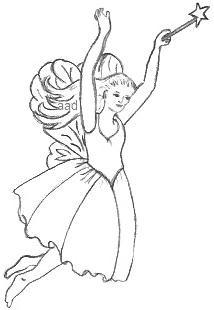
There is a fairy. Her name is Maggie. Maggie’s house is completely blue inside and outside. She has a cat. Her name is Cuky. Cuky is blue all over, too. Maggie cannot see Cuky. When she goes to the living room and sits on the sofa, Cuky screams “Meow.” When she goes to the bedroom and sits on the bed, Cuky screams, “Meow” again. Maggie gets angry and takes out her magic pencil, and turns the house into different colors. Now, Maggie can see Cuky wherever she goes.
Establish the first location by using a student dressed as a fairy, or use a picture of a fairy and a picture of a house.
There is a fairy.
• Write it on the board and read it aloud. Point to the student dressed as a fairy, or to the picture.
• Explain the statement in the students’ native language, and ask the following questions:
Is there a fairy?
Is there a lady?
Is there a fairy or a lady?
Her name is Maggie.
• Write it on the board and read it aloud. Point to the student dressed as a fairy, or to the picture.
• Explain the statement in the students’ native language, and ask the following questions:
Is her name Maggie?
Is her name Maggie or Mary?
What is her name?
What is your name?
What is my name?
Maggie’s house is completely blue inside and outside.
• Write it on the board and read it aloud. Point to the student dressed as a fairy, or to the picture. Then point to a picture of a house.
• Review colors using realia with different things in the classroom.
• Explain the statement in the students’ native language.
• Explain the adverbs completely, inside, and outside, and ask the following questions:
Is Maggie’s house completely blue?
Is Maggie’s house completely red?
What color is Maggie’s house?
What color is your house?
Is the house blue inside?
Is the house blue outside?
Is the house blue inside and outside?
What color is the house?
She has a cat.
• Write it on the board and read it aloud. Point to the student dressed as a fairy or to the picture. Then point to a picture of a cat.
• Explain “Does she?,” “she has,” “Does she have?”
• Explain the statement in the students’ native language, and ask the following questions:
Does she have a cat?
Does she have a cat or a dog?
Do you have a cat?
Who has a cat?
Her name is Cuky.
• Write it on the board and read it aloud. Point to the picture of a cat.
• Explain the statement in the students’ native language, and ask the following questions:
Is her name Cuky?
What is her name?
• Explain the possessive form her / his. First use a girl from the classroom to ask:
Her name is ____________ .
What is her name?
• Repeat with several girls.
• Review the possessive form his. Then, use a boy from the classroom to ask:
His name is ______?
What is his name?
• Repeat with several boys.
Cuky is blue all over too.
• Write it on the board and read it aloud. Point to the picture of a cat. (The cat should be blue.)
• Explain the statement in the students’ native language, and ask the following questions: Is Cuky blue all over too?
Is Cuky yellow all over too?
Is Cuky blue or yellow all over too?
What color is Cuky?
Maggie cannot see Cuky.
• Write it on the board and read it aloud. Point to the student dressed as a fairy or to the picture. Then point to the picture of the cat.
• Explain the structure cannot see.
• Explain the statement in the students’ native language, and ask the following questions:
Can Maggie see Cuky?
Can Cuky see Maggie?
Who cannot see Cuky?
Can you see me?
Can you see ____? Yes or no?
(Name a student)
You cannot see ____?
(The student hides behind the door.)
• Place the illustration chosen for the second position or location.
1st Statement
When she goes to the living room.
• Write it on the board and read it aloud. Point to the living room picture.
• Explain the statement in the students’ native language and the relationship between Maggie and the pronoun she.
• Ask the following questions:
Does Maggie go to the kitchen?
Doesshe gotothelivingroom?
Does she go to the living room or to the kitchen?
2nd Statement
She sits on the sofa.
• Write it on the board and read it aloud. Point to the fairy sitting on the sofa picture.
• Review the action word sit.
• Explain the statement in the students’ native language, and ask the following question:
What does she do?
3rd Statement
Cuky screams “Meow.”
• Write it on the board and read it aloud. Point to the cat picture.
• Explain the statement in the students’ native language, and ask the following questions:
Does Cuky scream “Help!”?
Does Cuky Scream “Meow!”?
Does Cuky scream “Help!” or “Meow!”?
• Place the illustration chosen for the third position or location.
1st Statement
When she goes to the bedroom
• Write it on the board and read it aloud. Point to the bedroom picture.
• Explain the statement in the students’ native language.
• Explain the relationship between does go.
• Ask the following questions:
DoesMaggiegotothebedroom?
Does Maggie go to the living room?
Does Maggie go to the kitchen?
3rd Statement
She sits on the bed.
• Write it on the board and read it aloud. Point to the picture of the bed.
• Explain the statement in the students’ native language, and ask the following questions:
Does Maggie sit on the bed?
Does Maggie sit on the table?
Does Maggie sit on the bed or the table?
Who sits on the bed?
Where does Maggie sit?
Cuky screams “Meow!” again.
• Write it on the board and read it aloud. Point to the picture of a cat.
• Explain the statement in the students’ native language and ask the following questions:
Does Cuky scream “Meow!” again?
Who screams “Meow!”?
Maggie gets angry.
• Write it on the board and read it aloud. Point to the picture of the angry fairy.
• Review emotions and feelings.
• Explain the statement in the students’ native language, and ask the following questions:
Does Maggie get angry?
Does Maggie get happy?
Does Maggie get angry or happy?
She takes out her magic pencil.
• Write it on the board and read it aloud. Point to the picture of fairy with the magic pencil.
• Review the action words takes out.
• Explain the statement in the students’ native language, and ask the following questions:
Does she take out a book?
Does she take out her magic pencil?
What does she take out?
She turns the house into different colors.
• Write it on the board and read it aloud. Point to the picture of the fairy walking to the house.
• Explain the meaning of the word “different. ”
• Review colors.
• Explain the statement in the students’ native language, and ask the following questions:
Does she turn the house into different colors?
Who turns the house into different colors?
Now she can see Cuky wherever she goes.
• Write it on the board and read it aloud. Point to the picture of the cat over the window.
• Explain the meaning of the ac- tion word “see. ”
• Explain the statement in the students’ native language, and ask the following questions:
Can Maggie see Cuky?
Who cannot see Cuky?
1. Assess the students’ comprehen- sion by having the students close their eyes and act out the verbs used in the story.
2. Identify the nouns orally from the illustrations to review them.
3. Practice the story exercises from pages 10-12 first orally, then in writ- ten form.
• Review the concept of names by asking the names of people, places, animals and things in the classroom.
• Introduce the concept of nouns by explaining to the students that the name words and nouns are the same, and that they are used for identifying people, places, animals and things.
• Practice exercises on pages 2-4.
• Identifying people, places, and animals using the word “noun”.
• Have the students identify the names in the classroom, and ask them what kind of noun it is.
• Chant: “Touch, touch, touch and touch; touch and clap your hands.” (Stop and touch something.)
• Ask students to stop. Ask different students what kind of noun they are touching. The students should answer a person or a thing, depending on what or who they are touching.
• Identify the pictures on pages 2 and 3 orally, do the exercises.
• Identify the pictures on page 4 orally, do the practice exercises.
• Continue reviewing the concepts and doing the practice exercises orally.
• Review the concepts with practice exercises on pages 13-15.
• Use a large calendar to review the names of the days of the week.
• Prepare flashcards with the names of the days.
• Identify the names of the days orally.
• Use the cards for the students to place them in the correct sequence.
• Identify the current or present name of the day of the week they are working on.
• Introduce the phrases: “Today is _________ ,“ “Yesterday was _________,” and “Tomorrow will be _________.”
• Review the vocabulary words: first, last, before, after, between.
• Dictate the words for writing and reading practices.
• Remind the students that the names of the days are always capitalized.
• Spell the names aloud.
• Observe the examples on page 16.
• Do the practice exercises on pages 16-20.
• Introduce the concepts of singular and plural.
• Present one object and various of the same kind.
• Explain that one object means singular.
• Talk about singular and plural nouns.
• Work with each noun case. Begin with those that form plurals by adding “s”.
• Do the practice exercises on page 21.
• Review nouns that end in s, sh, and ch, and add es. Do the practice exercise on page 22.
• Present the special plural. Practice the singular and plural forms with flash cards.
• Do the practice exercise on page 23.
• Practice with several examples on the board.
• Explain how to pluralize nouns ending in y.
• Review all of the cases for forming plurals, by writing the singular forms for students to write the plural forms. Read and practice orally several times.
• Do the practice exercises on page 24.

I. Explain the meanings of these words. Review with gestures, use pictures, realia, or another resource.
II. The teacher guides practice exercise from page 25. First orally, then in written form. Correct orally.

I. Explain the meanings of these words. Review with gestures, use pictures, realia, or another resource.
II. The teacher guides practice exercise from page 26. First orally, then in written form. Correct orally.
• Use a large calendar to identify the names of the months of the year.
• Prepare flashcards with the names of the months of the year.
• Read and identify the names orally.
• Place the cards in disorder for students to put them in correct order.
• Identify the name of the current month.
• Use the phrases: “This month is _______,” “Last month was _________,” etc.
• Spell the words aloud.
• Dictate the names for students to write them in their notebooks. Then, each student will check from the corrections on the board.
• Observe the examples on page 27.
• Do the practice exercises on pages 27 and 28.
• Remind the students that these names are always written with capital letter.
• Practice the poem on page 27, first in group, then individually.
• Discuss the holidays found on page 28.
• Read and answer oral questions.
• Work with the concept of big and small with the letters of the alphabet. Have students observe and identify which letters are big and which are small.
• Next, talk about upper case and lower case.
• Have students identify the upper case and lower case letters with yes/ no questions.
• Write the letters on the board to identify them orally.
• Review the concepts of proper nouns and common nouns by relating the concept of proper nouns to names of people, also to the days of the week because they are always capitalized.
• Compare proper nouns with common nouns. Have students observe the initial letters of the words.
• Then, relate the proper nouns to the months of the year which are always capitalized as well. Pages 27 and 28.
• Do the practice exercise on page 30.
Oscar’s Adventures
Problem: Oscar could not climb down the tree.
Student’s book page 36
• Use opposites
• Describe emotions and feelings
• Discuss work/careers
• Storytelling
• State chronological order of events
• Use the structure can – can not + verb
Grammar
• 1st and 3rd person singular of the present tense
• 3rd personpluralofthe present tense
• Real-time story sequencing
• Agreement in gender and number
• Definite articles
• Indefinite articles
• Contrasting present and past tenses
• Syntax: noun – adjective
1. Present the vocabulary words and pictures from page 36, and practice orally several times.
2. Create a gesture for each verb or adjective. Maintain the same gestures throughout the book.
3. Always teach the present tense of the verb first, and only one tense at a time. Practice with gestures.
4. Write the words in red on flash cards, and read them aloud several times. Match the words with the illustrations.
5. Do the gestures with the students to reinforce and check comprehension of the verbs.
6. Use the story and ask the story using locations and circling questions.
7. Use the pictures on pages 36 and 37 to reinforce vocabulary.
1. Practice the past and present tenses of the verbs. Use the thumb finger to signal backwards as a gesture to indicate the past tense of the verb. Always teach the present tense first, and then teach the past tense. Practice both tenses with gestures.
2. Read the story aloud and have the students act out the verbs as they hear them.
3. Prepare questions to create or practice the statements.
4. Do the practice exercise on page 38.
Oscar up went to tree down got scared garden tall liked to Police Department short climb up police officer top could help ladder bottom get down neighbor’s house big neighbor small
Ask the following questions for students to answer in unison or individually:
Has anyone climbed up a tree ? Could you get down? How did you get down? Did you need someone to help you?
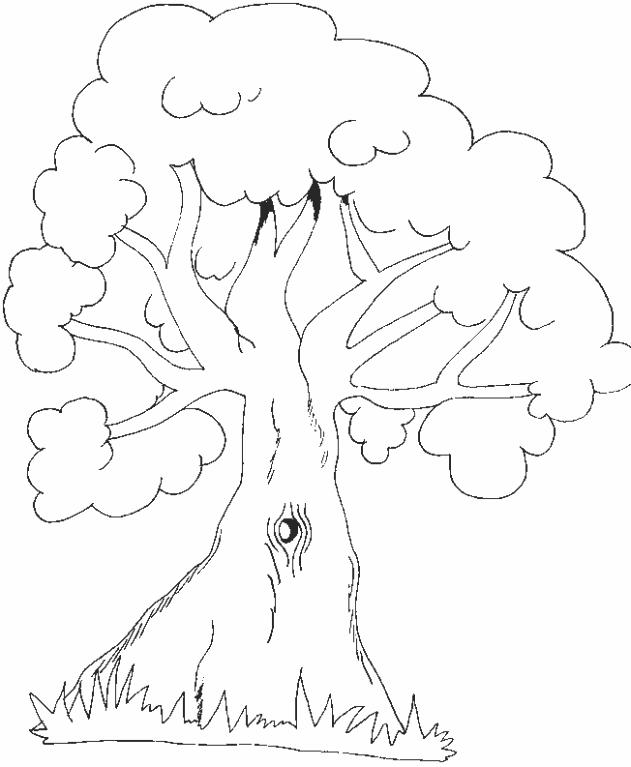
Aboy named Oscar liked to climb on trees in the garden. One day he climbed to the top of a very tall tree. At the top of the tree he got scared and could not get down. His mother wanted to get him down. She went to the neighbor’s house. The neighbor said: “I do not have a long ladder to help Oscar to get down”. Then, she went to the Police Department. There she spoke to the police officer. The police officer said: “I have a long ladder to help Oscar to get down the tree.” The police officer went to the garden and took Oscar down. Finally, Oscar got down the tree. Oscar’s mom was very happy.

Student’s book page 41
Problem: Felix the cat cannot come down from the tree.
Ask the following questions for students to answer in unison or individually:
• Who has a cat?
• What is your cat’s name?
• Can your cat climb up trees?
1. Present the vocabulary words and pictures from page 41, and practice orally several times.
2. Create a gesture for each verb or adjective. Practice several times. Maintain the same gestures throughout the book.
3. Always teach the present tense of the verb first, and only one tense at a time. Practice with gestures.
4. Write the words in red on a flash card and read aloud several times. Match the words with the illustrations.
5. Do the gestures with the students to reinforce and check comprehension of the verbs.
6. Practice the present and past tenses of the verbs. Use the thumb finger to signal backwards, a gesture to indicate the past tense of the verb. Always teach the present tense first, and then teach the past tense. Practice both tenses with gestures.
7. Read the story aloud and have the students act out the verbs as they hear them. Do the practice exercises on pages 46-49.
cat big runs up net long goes to owner short speaks to police officer is scared
Fire Department Chief comes down carpenter wants to
Police Department
Fire Department firemen ladder
cat named Felix runs up and down the trees in the garden. One day, he runs up a very tall tree. At the top of the tree, he gets scared and cannot come down. His owner wants to get him down. The owner goes to the Police Department. There he speaks to the police officer. The police officer says he doesn’t have a long ladder, so he can’t help. Then, he goes to a carpenter shop. There he speaks to a carpenter. The carpenter says he doesn’t have a long ladder. Next, he goes to the Fire Department. There he sees the Fire Department Chief. The Fire Department Chief says “Yes, we can help you. We have a long ladder and a big net.” The firemen take the cat down. The cat’s owner is very happy.
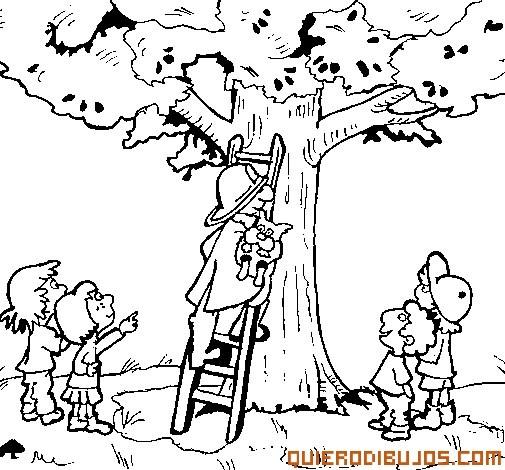
• Review the concept of proper nouns with oral questions.
• Write various names of students in the class on the board with lower case letter.
• Ask the students to observe and explain what is wrong with the names.
• Read the names and capitalize.
• Present sentences with the names of students in the class on the board.
Example: Mary is pretty. Tom is thin.
• Explain that the group of words that describe someone or something is called a sentence, and it must begin with a capital letter and end with a period.
• Practice writing several examples of sentences on the board, and have students read them aloud. Underline the first letter and mark a period at the end.
• Do practice exercise on page 32.
• Work with abbreviations. Explain that to abbreviate means to make words shorter.
• Write several examples on the board and practice reading them aloud.
• Do the practice exercises on page 33.
• Present illustrations of five to seven community helpers. Identify them orally. Write the names on the board. Read them aloud and have students match the names with the pictures.
• Ask who has seen anyone of the community helpers. Follow up with yes/no and either/or questions.
• Review the group of community helpers that were introduced the day before. Introduce the other community helpers presented in the book and work with them.
• Have students bring an object or a piece of clothing that identifies the different community workers. Let the students introduce or present themselves as the community worker they chose to represent, saying: “I am a (an)
• Read the names of the illustrations on page 34 aloud, and ask “What are you?” They should answer the name of the community worker they represent. Do the practiceexercise on page 35.
• Choose eight verbs from the lesson on page 50 and present them with gestures.
• Have the students observe first, then do the gestures together as the teacher calls out the actions.
• Write the names on the board and, together with the class, read them aloud several times.
• Match the names with the pictures of the actions.
• Play a game called Statues. The teacher calls out the names of the actions and students try to do them. When the caller says “statue,” everyone has to stay still. Whoever breaks the rule or moves has to sit down.
• Choose another group of eight verbs and work with them, following the previous steps until the students can identify them. Do all the gestures and relate the names to the actions.
• Do the practice exercises on pages 51-53.
• To begin working with informative sentences, put a toy on the desk for students to observe. Have students say different things about the toy (its size, shape, color, etc.)
• Explain to the students that they are describing the toy.
• Write the descriptions given by the students on the board.
• Remind the students that all sentences begin with a capital letter and end with a period. Tell the students that they are making sentences, and that sentences are also called statements.
• Also tell the students that an informative sentence gives information about something or someone.
• Use the informative sentences or statements given by the students and change them to questions. Remind the students that question sentences must also begin with a capital letter and end with a question mark.
• Write the question mark at the end of the sentences.
• Write the informative and question sentences side by side on the board, and have the students read the sentences aloud and identify them as informative or question sentences.
• Emphasize on capitalization and punctuation by underlining the beginning letters and the ending punctuation marks. Write three informative sentences on the board, then change them to questions.
• Give each student a cardboard with a period and question mark on it.
• Read the sentences aloud with your back turned to them. Ask them to show the correct punctuation to be used at the end as the teacher reads each sentence. (and stops)
• Do the practice exercises on pages 40 and 44.

I. Explain the meanings of these words. Review with gestures, use pictures, realia, or another resource.
II. The teacher guides practice exercise from page 54. First orally, then in written form. Correct orally.
• Present the structure can + verb illustrating actions students can do. Explain the meaning of the verb can. Ask students to give examples of things they can do. Write a few examples on the board. Explain to the students how to change the structures from affirmative to negative form. Practice several examples with the students orally.
• Ask the students oral questions about things they can do. Change the statements to questions. Write questions on the board and emphasize on capitalization and punctuation.
• Write other examples on the board for students to identify them as affirmative, negative, or interrogative sentences. Read examples on page 55. Do the practice exercise on page 56.
Problem: Ralph wanted to eat fried chicken from the moon.
Student’s book page 62
• Identify types of transportation
• Describe emotions and feelings
• Storytelling
• State chronological order of events
• Use the structure need / needed to + verb
1. Present the vocabulary words and pictures from page 62, and practice them orally several times.
2. Create a gesture for each verb or adjective. Maintain the same gestures throughout the book.
3. Teach the present tense first and practice with gestures.
4. Match the words with the illustrations.
5. Do the gestures with the students to reinforce, and check comprehension of the verbs.
6. Practice the past and present tenses of the verbs. Use the thumb finger to signal backwards, a gesture to indicate the past tense of the verb.
7. Read the mini story aloud and have the students act out the verbs as they hear them.
8. Prepare questions to circle or practice the statements.
9. Do vocabulary practice exercises on pages 62-64.
teacher was going to take party needed to get students could not get conductor spoke to train went to station was sorry could take
Ask the following questions for students to answer chorally or individually:
• Who likes to eat fried chicken?
• What kind of fried chicken do you like?
There was a boy. His name was Ralph. Ralph liked fried chicken. But he wanted to eat crispy fried chicken. So he went to a restaurant named Traditional Chicken. There he asked the chef for crispy fried chicken. The cook said they only had roasted chicken. He went to another restaurant named Chicken Ville. There he asked the chef for crispy fried chicken. The chef said they only had regular fried chicken. He went to another restaurant named Krispy Fried Chicken. There he saw the chef. He asked him for crispy fried chicken. The chef said “We have a lot of crispy fried chicken.” Ralph was very happy.

Student’s book page 67
Problem: The teacher needed to get a bus to take her students to McBites Restaurant.

1. Present the vocabulary words and pictures from page 65, and practice them orally several times. Do practice exercises on pages 65 and 66.
2. Create a gesture for each verb or adjective. Maintain the same gestures throughout the book.
3. Teach the present tense first and practice with gestures.
4. Match the words with the illustrations.
5. Do the gestures with the students to reinforce, and check comprehension of the verbs.
6. Practice the present and past tenses of the verbs. Use the thumb finger to signal backwards, a gesture to indicate the past tense of the verb. Always teach the present tense first, and then teach the past tense. Practice both tenses with gestures.
7. Read the mini story aloud and have the students act out the verbs as they hear them.
8. Do practice exercises on pages 68-70.
CHAPTER 3
bus many take driver several needs to get
Mc Bites second is going to take bus driver some asks
Juan Díaz all
Diablo Rojo happy cannot get bus station speaks to can
Ask the following questions for students to answer in unison or individually:
• Do you like to go to a restaurant?
• Which is your favorite restaurant?
• Do you like to go to parties?
• Which are your favorite parties?
Asecond grade teacher is going to take some students to a party at McBites’ restaurant. The teacher needs to get a bus to take them, but she cannot get one. She goes to the Gran Estación bus station. There she asks many bus drivers for a bus. They all say they are sorry they cannot get her a bus. Next, she goes to the bus station in Juan Díaz. She speaks to several bus drivers there. They all say they are sorry they cannot get a bus for her. Finally, she goes to the Diablo Rojo bus station in the city. One of the bus drivers at the bus station gets a bus for her. The teacher is very happy because she can take the students to McBites’ restaurant.
• Review the concepts of names and nouns.
• Write five sentences on the board. Underline the names to identify them. Tell the students these are nouns.
• Use flash cards with pronouns written on them. Place the pronouns under the underlined nouns, then rewrite the sentences with the pronoun. Read both sentences aloud and explain to the students the function of the pronouns.
• Write other examples on the board for the students to change the nouns to pronouns. Make sure that the students understand the differences between male and female, nouns and pronouns. And also, the differences between the concepts of singular and plural.
• Identify the pronouns on page 58. Do the practice exercises on page 59.
• Review the structures can + verb and cannot + verb. Write could beside them.
• Have students make sentences with can.
• Explain that could is the past form of can. Use gestures to review the present and past forms.
• Explain that the negative form of could is formed by adding the word not. Write a few examples of the present form sentences on the board. Ask students to change them to the past, and also include the negative and question forms.
• Observe the examples on page 60.
• Do the practice exercises on page 61.
• Review the use of noun markers with oral questions.
• Review the examples on page 71 orally.
• Write a few sentences on the board using the examples.
• Review the use of pronouns by underlining the nouns and replacing them with pronouns.
• Do the practice exercises on pages 72 and 73.
• Inform students that affirmative and informative sentences are the same.
• Have students make sentences about themselves using the verb to be.
• Write a few sentences on the board and add the word not after the verb.
• Explain briefly that affirmative sentences or informative sentences become negative sentences by adding not after the form of the verb to be in the sentences.
• Observe the examples on page 74.
• Ask the students to give other examples.
• Do the practice exercises on pages 75 and 76.

I. Explain the meanings of these words. Review with gestures, use pictures, realia, or another resource.
II. The teacher guides practice exercise from page 77. First orally, then in written form. Correct orally.

name sentences say good help very
I. Explain the meanings of these words. Review with gestures, use pictures, realia, or another resource.
II. The teacher guides practice exercise from page 78. First orally, then in written form. Correct orally.
Problem: Tammy has to get a new dress.
Student’s book page 85
• Identifying clothing
• Describing emotions and feelings
• Stating chronological order of events
• Using the structures
Want to + verb Need to + verb
1. Present the vocabulary words and pictures from page 85, and practice orally several times.
2. Match the words with the illustrations.
3. Create a gesture for each verb or adjective. Maintain the same gestures throughout the book.
4. Teach the present tense first and practice with gestures then check comprehension of the verbs.
5. Reinforce and practice the present and past tenses of the verbs.
6. Use the thumb finger to signal backwards, a gesture to indicate the past tense of the verb. Always teach the present tense first, and then teach the past tense.
7. Read the mini story aloud and have the students act out the verbs as they hear them.
8. Do practice exercises on pages 85 and 86.
Ask the following questions for students to answer in unison or individually:
• Who likes to go shopping to buy clothes?
• Which are your favorite stores? TPRS NEW ENGLISH ADVENTURES LEVEL 2 TEACHER’S GUIDE
Tammy was sad sales clerk had to get saleswoman didn’t have dressmaker went to department said size made
There was a girl. Her name was Tammy. Tammy was sad because she had to get a new dress. She went to Conway Store. There she saw a salesclerk in the women’s department. The salesclerk said she didn’t have any dresses in Tammy’s size. Then, Tammy went to another store. The saleslady in the women’s department said she didn’t have any dresses in Tammy’s size. Finally, Tammy went to a dressmaker. The dressmaker made a new dress for her, just the right size.
Bob’s New Pants
Student’s book page 87
Problem: Bob has to get a new pair of pants.

1. Present the vocabulary words and pictures from pages 27 and 88, and practice orally several times.
2. Match the words with the illustrations.
3. Create a gesture for each verb or adjective. Maintain the same gestures throughout the book.
4. Teach the present tense first and practice with gestures, then check comprehension of the verbs.
5. Reinforce and practice the present and past tenses of the verbs.
6. Use the thumb finger to signal backwards, a gesture to indicate the past tense of the verb. Always teach the present tense first, and then teach the past tense.
7. Read the mini story aloud and have the students act out the verbs as they hear them.
8. Do practice exercises on pages 90-92.
Ask the following questions for students to answer orally and individually:
• Where do you go to get a new pair of pants?
• Do you have a tailor to make pants for you? TPRS NEW ENGLISH ADVENTURES LEVEL 2 TEACHER’S GUIDE CHAPTER 4
NOUNS ACTION WORDS / VERBS salesman talks to tailor says size doesn’t have men goes to department makes him pants
There is a boy. His name is Bob. Bob is sad because he has to get a new pair of pants. He goes to the Titans store. There he talks to a salesman in the men‘s department. The salesman says he doesn’t have any pants in Bob’s size. Then Bob goes to Magnus Store. The saleslady in the men’s department says she doesn’t have any pants in his size. Finally, Bob goes to a tailor. The tailor makes him a new pair of pants in his size.
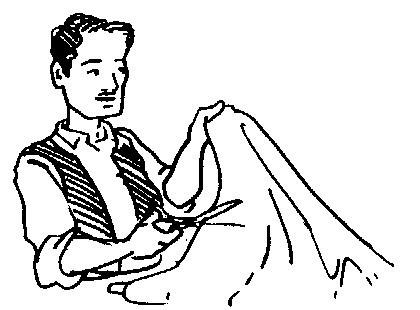
• Choose eight pieces of clothing from the illustrations on page 80.
• Introduce the pieces of clothing with pictures.
• Practice identifying the pieces orally, several times.
• Relate the names with the pictures, and practice matching them.
• Continue introducing eight more pieces. Follow the previous steps. Add the rest of the clothing, and follow the same steps as the ones above. Classify the clothing according to the occasions we wear them.
• Prepare a fashion show activity in which each student will describe the piece of clothing he or she is wearing. Assign a different piece to each student.
• Do the practice exercises on pages 81 and 82.
• Review the concepts “naming part” and “action part” in a sentence by dramatizing each part. Use students in the class to dramatize sentences written on the board. Ask students to identify who or what is doing the action by asking: “Who is this?” Then, “Who is he/she?”
• Write the words “naming part” and “action part” on the board. Create a sentence about someone in the class; the person or thing that should be placed under the naming part, and have that person or thing do the action described in the sentence.
• Explain to the students that the naming part is called the subject and the action part is called the predicate. Place the words “subject” and “predicate” below those words in the sentences on the board.
• Observe the examples on page 83. Do the practice exercises on pages 83, 84, 93, and 94.
• Ask students to talk about things they have to do every day (eat, sleep, bathe, comb your hair, brush your teeth, etc.) Remind them that have to implies that they need to do it.
• Write the structure have to + go on the board. Ask students to give examples of places we have to go to (school, home, church, supermarket, etc.)
Begin with:
“I have to go to ___________________.”
Then, continue making sentences with you. Ask students:
“What do you have to do? ________.”
Have them answer yes/no questions.
“Do you have to ___________________?.”
• Next, work on sentences with he – she - it. Give examples orally. Write a few examples on the board. Underline the object-verb relationship. Have students make sentences about classmates or things using he, she, and it. Write the examples on the board.
• Underline the subject-verb relationship. Compare the sentences with I and you subjects to the ones written with he, she, and it. Ask students to explain the differences they observe.
• Finally, work with sentences with the pronouns we, you, and they. Have students make oral sentences with these subjects. (you, we, they). Write the examples on the board, compare them with the he, she, it subject sentences. Ask students about their observations.
• Reinforce by asking yes/no and either/or questions about the sentences made by the students.
• Observe the examples on page 96. Read aloud and do practice exercises on page 97.

I. Explain the meanings of these words. Review with gestures, use pictures, realia, or another resource.
II. The teachers guides practice exercise from page 95. First orally, then in written form. Correct orally.
• Write a list of action words or verbs on the board. Read orally and do the gestures. Remind students that pronouns are words that replace nouns or names.
• Write some names on the board and replace them with pronouns (John, Tom, Helen, children, classmates, the first line of students, etc.) Place those pronouns before the verbs on the board, and tell the students they are subject pronouns because they are always used as the subject of sentences. List the subject pronouns and read them aloud.
• Make a list of subject pronouns. Write the objective pronouns beside the subject pronouns. Tell the students that these pronouns come after the verb. Write them after the list of verbs on the board. Tell them that they are called objective pronouns because they come after the verb or action word and after the prepositions.
• Write the words “subjective pronouns” and “objective pronouns” above the examples on the board. Emphasize the concepts before and after the verb.
• Write a few examples on the board to practice.
• Observe examples on page 98 and do the practice exercises.
The Special Swan
Student’s book page 106
Problem: Daffy needed to learn to fly.
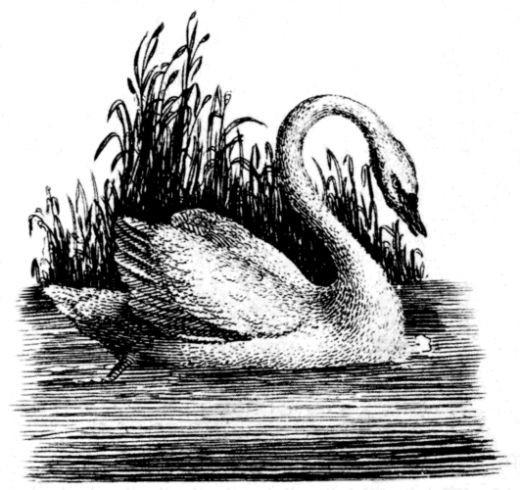
1. Present the vocabulary words and pictures from pages 106 and 107, and practice orally several times.
2. Create a gesture for each verb or adjective. Teach the present tense first, and practice with gestures to reinforce and check comprehension.
3. Match the words with the illustrations.
4. Practice the present and past tenses of the verbs with gestures. Always teach the present tense first, and then the past tense.
5. Read the mini story aloud and have the students act out the verbs as they hear them.
6. Do practice exercises on pages 106-109.
TPRS NEW ENGLISH ADVENTURES LEVEL 2 TEACHER’S GUIDE
river ran flew swan need showed him flying trainer could fly learned wings could not fly to flap flapper went give
Ask the following questions for students to answer in unison or individually:
• Who has seen a swan?
• Are there swans in Panama?
• Can swans fly?
Once upon a time, there was a river with many swans. One of the swans was very special. His name was Daffy. Daffy needed to learn to fly, so he went to a swan school to learn. The flying trainer gave him special wings to help him go up. He went up, but he still could not fly. Then, the flying trainer gave him a flapper, so he could flap his wings, but he still could not fly. Finally, the flying trainer showed him how to flap his wings and run. Daffy did it and he could fly. Daffy was very happy he could fly with the other swans.
• Introduce the time markers with gestures.
• Write a sentence with a present tense time marker. Add the other examples of time markers for present tense, and read them with the sentences while students practice the gestures.
• Choose another time marker to change the present tense example. Reread the sentence with the changes. Do the gesture that symbolizes the time marker.
Example. For the past tense, move the thumb finger bacwards.
• Write a few examples on the board and underline the time markers.
• Observe the examples on page 102 and read aloud.
• Have students create sentences with the appropriate time.
• Introduce the names of the numbers with their corresponding values. Read and practice several times.
• Introduce the concept that we repeat the numbers from one to nine, after every ten (ten, twenty, thirty,…) using the ten as root name.
Example: Thirty-one, thirty-two, thirty-three… Eighty-one, eighty-two, eighty-three...
• Put several examples on the board for the students to identify and read aloud.
• Read the examples on page 103.
• Do the practice exercises on page 103.
• Present the structures with examples. Have students give examples of things they need to do every day.
• Write some of the examples given by the students on the board.
• Point out the difference between need to and needs to by writing examples on the board.
• Ask yes/no questions related to the sentences on the board.
• Introduce the past tense using gestures and the past tense compliments.
• Observe, read, and practice the examples on page 104.
• Have students create other examples and use questions to reinforce the usage of the structures.
• Read the examples on page 104. Review the time markers on page 102.
• Do the practice exercise on page 105.
• Write a few affirmative sentences on the board, and ask the students to change them to negative sentences.
• Read the affirmative and negative sentences.
• Ask the students to give examples of actions they do everyday. Write the sentences on the board. Ask students to change the sentences to negative. Write students’ examples on the board.
• Add the necessary words for changing the sentences to negative.
• Read the affirmative and negative sentences.
• Ask the students to change other sentences to negative. Write the examples on the board. Underline the words that make the sentences negative. Ask the students to explain the underlined words.
• Read the information on page 110.
• Do the practice exercises first orally, then in written form on page 111. Read and correct orally.
Problem: Tabby needs to learn to swim.
Student’s book page 112

1. Present the vocabulary words and pictures from pages 112 and 113, and practice orally several times.
2. Create a gesture for each verb or adjective; maintain the same gestures throughout the book.
3. Teach the present tense first, and practice with gestures to reinforce and check comprehension of the verbs.
4. Match the words with the illustrations.
5. Practice the present and past tenses of the verbs. Always teach the present tense first, and then teach the past tense. Practice both tenses with gestures.
6. Read the mini story aloud and have the students act out the verbs as they hear them.
7. Do practice exercises on pages 112, 113, and 115-117.
TPRS NEW ENGLISH ADVENTURES LEVEL 2 TEACHER’S GUIDE
pond needs to ducks learn to swim duck school goes to trainer gives her ball can float wings to move feet cannot swim learns to swim
Ask the following questions for students to answer in unison and individually:
• Can you swim?
• Do you like to swim?
• Where have you gone swimming?

n the pond at a school there are many ducks. There is a special duck. Her name is Tabby. Tabby needs to learn to swim. Tabby goes to a duck school to learn to swim. The swimming trainer gives her a board to help her float. Tabby can float, but she still cannot swim. The swimming trainer gives her a ball to help her float. Tabby floats but still cannot swim. Finally, the trainer shows Tabby how to move her wings and legs together. Tabby does it and she learns to swim. Tabby swims up and down the pond. She is happy. She can swim with the other ducks.
• Review the concept of names for things, places, and people.
• Look at the examples on page 118.
• Ask the students to explain why they begin with capital letters.
• Write some proper names on the board. Ask students to give a common name for the classification.
Example: Toyota – car Panama – country, etc.
• Read the examples on page 118. Do the practice exercises on page 119.
• Remind students that there are words that tell us something else about the names or the nouns. These words are called adjectives.
• Explain that they are usually written right before the noun to describe them.
• Write some examples of the adjectives before the nouns, and some examples of the adjectives after the noun. Point out the verb be, looks, feel, etc.
• Observe the example on page 120. Do the practice exercises on pages 121-123.

I. Explain the meanings of these words. Review with gestures, use pictures, realia, or another resource.
II. The teacher guides practice exercise from page 124. First orally, then in written form. Correct orally.

I. Explain the meanings of these words. Review with gestures, use pictures, realia, or another resource.
II. The teacher guides practice exercise from page 125. First orally, then in written form. Correct orally.

I. Explain the meanings of these words. Review with gestures, use pictures, realia, or another resource.
II. The teacher guides practice exercise from page 126. First orally, then in written form. Correct orally.
• Ask students to give oral examples of things they like to do.
• Write the examples on the board.
• The teacher writes a sentence saying: “I like to _______________.”
• Next, the teacher asks: “Who likes to ______________?” using the examples on the board, and writes the names of the people or person that likes to ____________.
• The teacher writes the name of the person that likes to _______________ and reads the statement. The teacher also underlines the structures likes to and like to. Next, the teacher proceeds to ask the students to explain their observations.
• Finally, the teacher reinforces comprehension of the concepts by asking yes/no, either/or, or wh questions.
• Observe examples on page 127.
• Do the practice exercise on page 127.
• Review the structure need to + action verb on page 104.
• Use pictures of actions students may want to perform in class ,and paste them on the board.
• Ask individual yes/no questions to the students.
• Ask group questions using yes/no questions.
• Write the names of the students who want to do the actions written on the board.
• Have the students do the actions and write the sentences on the board.
• Write a sentence about what the teacher wants to do. Example: “I want to _______________.”
• Write other sentences about what individuals and groups would want to do. Underline the structure want to or wants to.
• Have students observe the structures and give information about answering guided questions prepared by the teacher.
• Observe examples on page 127.
• Do the practice exercises on page 128.
TPRS NEW ENGLISH ADVENTURES LEVEL 1 TEACHERS GUIDE
TPRS NEW ENGLISH ADVENTURES LEVEL 2 TEACHER’S GUIDE
The Short-Legged Rabbit
Problem: Harris doesn’t have long legs.
Student’s book page 134

NOUNS DESCRIPTIVE WORDS ACTION WORDS rabbit long went leg short needed to get sticks longer told to run fast tied to
1. Write the vocabulary words from page 134 in red on flash cards and read orally several times.
2. Do the gestures with the students to reinforce, and check comprehension of the verbs.
3. Teach the past tense of the verbs. Practice both the present and past tenses of the verbs.
4. Do P.Q.A.
5. Read the mini story aloud, and have the students act out the verbs as they hear them.
6. Prepare questions to circle or practice the statements.
7. Do the practice exercises on pages 134 and 135.
Ask the following questions for students to answer in unison or individually:
• Who has seen a rabbit? How was it?
• What kind of legs do rabbits have?
• How do they run?
Rabbits are very fast runners, so they have long legs, not short legs. There was a rabbit. His name was Harry. Harry’s legs were short. He needed longer legs. For Harry to get longer legs he went to a rabbit specialist. The rabbit specialist told him to run every day. Harry ran every day but his legs didn’t get longer. He went to another rabbit specialist. The rabbit specialist told him to tie some long sticks to his legs. Harry tied the long sticks to his legs. His legs looked longer. Harry was happy.
Student’s book page 137
Problem: Joe wants to move faster.

1. Write the vocabulary words from page 137 in red on flash cards, and read aloud several times.
2. Create a gesture for each verb or adjective, maintain the same gestures throughout the book.
3. Do the gestures with the students to reinforce and check comprehension of the verbs.
4. Teach the words happy and sad with gestures.
5. Teach the past tenses of the verbs and use the thumb finger to signal backwards indicating the past. Practice both the present and past tenses of the verbs. Do P. Q.A.
6. Read the mini story aloud and have the students act out the verbs as they hear them.
7. Do practice exercises on pages 141 and 142.
turtle fat exercise doctor thin tells
fruits fast walk vegetables slow tells to fish to walk goes to
Ask the following questions for students to answer chorally or individually:
• Have you seen a turtle?
• How are they?
• Can turtles run fast?
• Do you like turtles?

Turtles are very slow walkers. Turtles should be thin, and not fat, so that they can walk faster. There is a turtle. His name is Joe. Joe is too fat. He has to be thin. For Joe to get thin, he goes to the turtle doctor. The turtle doctor tells him to eat fish and vegetables only, but Joe doesn’t get thin. He goes to another turtle doctor. The doctor tells him to eat fruits and vegetables only, but Joe doesn’t get thin. Joe goes to another doctor. The doctor tells him to eat fish, vegetables, fruits and to exercise every day. Joe gets thin. He is happy. He walks faster now.
• Use real objects and situations to demonstrate the positions indicated by the prepositions.
Example: Put something on a table.
Say: “The ________________ is on the table.”
Have students observe; then ask:
“Is the __________________ on the table?”
“Is the ___________________ on the floor?”
“Where is the _____________________?”
Write the word “on” on the board.
• Do the same with other prepositions and objects.
• Ask the students what do these words tell us? Then explain to the students that the words that tell us where are called prepositions.
• Observe the examples on page 130.
• Do the practice exercises on pages 131-133, and 139.
• Create a game and call it Doing!
• Review the subject-verb relationships of I, you, He She, etc.
• Assign a student to do something.
• Ask what is he, she, etc. doing?
• Everyone answers: “He is _____________.”
• Ask about yourself, the group and other groups, and so forth.
• Tell the students that when we want to talk about what somebody is doing, we use the structures:
I am + verb + ing
You are + verb + ing
He/ She / It + is + verb + ing
• Practice the structures orally by observing page 145.
• Ask questions. Use the structures on a daily basis in class for students to familiarize themselves with these actions.
• For example, you can ask:
“What are you doing today?”
“What is he doing today?”
“What is she doing today?”
“How are we doing today?”
• Observe the examples on page 145. Read and practice.
• Do the practice exercises on page 146. First orally, then in written form. Correct the exercises orally.
• Review action verbs with illustrations and gestures.
• Write sentences on the board with some of the verbs reviewed.
• Place the auxiliaries do or does at the beginning, to show students how to change sentences with regular verbs to questions.
• Underline the auxiliaries and ask the students to explain the changes they observe.
• Reinforce the concept on the usage of does and the elimination of the “s” on the third person singular verbs, by writing several examples on the board.
• Observe the examples on page 148. Do several oral practices.
• Do the practice exercise on page 148.

our home old read went even
I. Explain the meanings of these words. Review with gestures, use pictures, realia, or another resource.
II. The teacher guides practice exercise from page 143. First orally, then in written form. Correct orally.

asked turned does only right us
I. Explain the meanings of these words. Review with gestures, use pictures, realia, or another resource.
II. The teacher guides practice exercise from page 144. First orally, then in written form. Correct orally.
• Review the use of time markers on page 102.
• Explain the relationship between the tenses and the time markers. Write an example on the board. Have students observe it.
• Make flash cards with several time markers.
• Show a time marker and ask students to make a sentence using it, for example: now, yesterday, today, etc.
• Write a sentence on the board and ask the class to approve or correct the sentence.
• Continue with other sentences and time markers to review usage.
• Read and gesture the time marker to reinforce comprehension.
• Observe the examples on page 150.
• Do the practice exercises on pages 151 and 152.
• Have students create sentences and use the time markers correctly.
• Write a few examples on the board and underline the time markers.
Jake the Jaguar
Student’s book page 153
Problem: Jake the jaguar was sad.

1. Present the vocabulary words with matching pictures on page 153. Practice them orally several times.
2. Create a gesture for each verb or adjective. Maintain the same gestures throughout the book.
3. Teach the present tense first.
4. Do the gestures with the students to reinforce and check comprehension of both tenses of the verbs.
5. Read the mini story aloud, and have the students act out the verbs as they hear them.
6. Prepare questions to circle or practice the statements.
7. Do practice exercises on pages 153 and 154.
jaguar friends funny laid cage zoo sad needed veterinarian hyenas happy wanted clown hat decided faces mirror acted clothes
Ask the following questions for students to answer in unison or individually:
• Should we try to make our friends happy?
• How can we make our friends happy?
There was a jaguar whose name was Jake. Jake was always sad. One day his friends saw him lying in his cage with a very sad face so they called the zoo veterinarian. The veterinarian said that Jake needed help to be happy. His friends tried different things to make him happy. First, they made funny faces. Next, they acted as hyenas and laughed and laughed. Finally, they made some funny clothes, got a clown hat and put them on. When Jake saw his friends in front of him, he laughed and laughed. Then Jake understood that his friends wanted him to be happy.
Problem: Zulky needs help to be happy.
Student’s book page 155

1. Present the vocabulary words with matching pictures from page 155. Practice orally several times.
2. Create a gesture for each verb or adjective, maintain the same gestures throughout the book.
3. Practice the past and present tenses of the verbs. Use the thumb finger to signal backwards, a gesture to indicate the past tense of the verb.
4. Teach the present tense first, and then teach the past tense. Practice both tenses with gestures to reinforce and check comprehension of the verbs.
5. Read the mini story aloud, and have the students act out the verbs as they hear them.
6. Do practice exercises on pages 158-160.
CHAPTER 7
TPRS NEW ENGLISH ADVENTURES LEVEL 2 TEACHER’S GUIDE
zebra is needs help
clown dresses up dances dress jumps up sing sleeping loves
Ask the following questions for students to answer unison or individually:
• Do you feel happy or sad?
• What do you need to do to be happy?
There is a zebra. His name is Zulky. Zulky is always sad. Zulky’s friends like to see him happy. One day his friends see him sleeping on the floor with a very sad face, so they called the veterinarian. The doctor says that Zulky needs help to be happy. His friends try different things to make him happy. First, they play music, sing, and dance. Next, they dress as clowns and jump up and down. Finally, they make some funny clothes, get a big hat and put them on him. When Zulky sees himself in the mirror, he laughs and laughs. Then Zulky understands that his friends love him, so he decides to be happy, not sad.
• Write a list of verbs on the board.
• Act out the verbs. Play the game What is happening?
• Ask the students:
“What do we say when the action is happening at the moment?”
• Give an example using the verb _____________.
“How do we say what happened yesterday?”
• Give an example with the verb _____________.
“How do we say what happens every day?”
• Give an example using the verb _____________.
“How do we say what will happen tomorrow?”
• Give an example with the verb _____________.
• Include the gesture for each time marker.
• Read the students’ examples and write the tenses beside them.
• Do gestures for the time markers and have the students identify them as present, past, future, and present progressive.
• Do the practice exercises orally, then do them in written form.
• Correct the written practice orally, and write the correct answer on the board for students to correct their answer.
• Do the practice exercises on pages 162 and 163.

I. Explain the meanings of these words. Review with gestures, use pictures, realia, or another resource.
II. The teacher guides practice exercise from page 164. First orally, then in written form. Correct orally.

I. Explain the meanings of these words. Review with gestures, use pictures, realia, or another resource.
II. The teacher guides practice exercise from page 165. First orally, then in written form. Correct orally.
• Write a few sentences with action verbs on the board.
• Explain to the students that to make wh questions, we place the wh word at the beginning of the sentence. The wh word used depends on what we want to ask about in the sentence.
• Example: We use who if we want to find out about a person, where if we want to find out about a place, etc. We also need to include the word do in some cases.
• Write a few examples on the board and underline the subject, the verb, or the complement.
• Practice with various examples on the board.
• Also explain that if the underlined word is an action or a place, we need to add the word do.
• Do the practice exercises on pages 167 and 168.
• Use flash cards to introduce the contractions. Match the long forms with the contracted forms to practice orally.
• Observe the examples and do the practice exercises on page 170.
• Write a few sentences on the board.
• Underline the adverbs and ask the students what do these words explain in the sentences.
• Reinforce the concept that adverbs tell us how something is done.
• Explain how they are written. Practice using a few examples on the board.
• Do the practice exercises on page 171.
TPRS NEW ENGLISH ADVENTURES LEVEL 2 TEACHER’S GUIDE
Problem: Mary wanted to learn the Congo Dance.
Student’s book page 172
Functions:
• Identifying regional dances
• Describing emotions and feelings
• Storytelling
• Stating chronological order of events
• Use structures: want to / wanted to + verb need to + verb
1. Present the vocabulary words with matching pictures from page 172. Practice orally several times.
2. Create a gesture for each verb or adjective. Maintain the same gestures throughout the book.
3. Practice the past and present tenses of the verbs. Use the thumb finger to signal backwards, a gesture to indicate the past tense of the verb.
4. Teach the present tense first, and then teach the past tense. Practice both tenses with gestures to reinforce and check comprehension of the verbs.
5. Read the mini story aloud and have the students act out the verbs as they hear them.
6. Do practice exercises on pages 172 and 173.
CHAPTER 8
TPRS NEW ENGLISH ADVENTURES LEVEL 2 TEACHER’S GUIDE
Mary went to dance school wanted to learn learn Tamborito dance taught could steps teach
Ask the following questions for students to answer in unison or individually:
• Who can dance?
• How do you dance?
• What is your favorite dance?
There was a girl. Her name was Mary. Mary danced in the folklore dance group at school. Mary wanted to learn the Congo dance. She went to a dance school in Chorrera. The teachers there said they only taught Cumbia Chorrerana. Next, she went to a dance school in Coclé. The teachers there said they only taught Tamborito Coclesano. Finally, she went to Colón. The teachers there said they could teach her to dance Congo because that is the traditional dance for that province. Mary was very happy that she could learn the Congo dance.
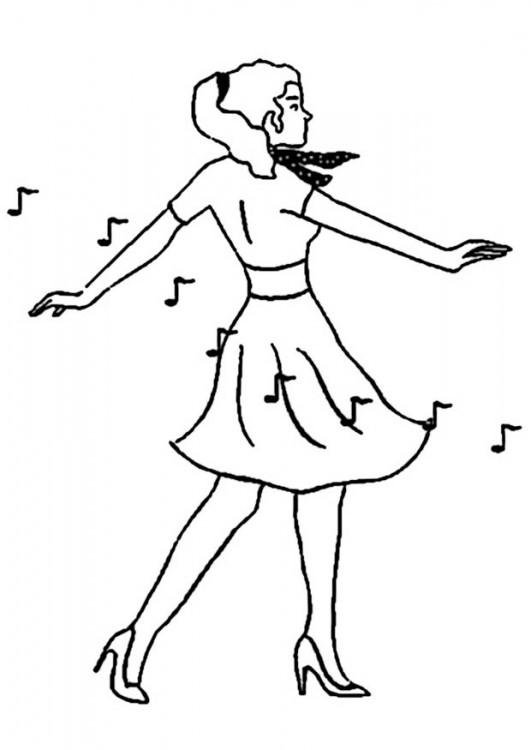
Problem: Andrés wants to learn the steps for dancing El Punto.
Student’s book page 174
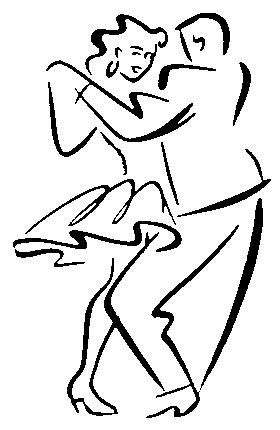
1. Present the vocabulary words and matching pictures from page 174, and practice orally several times.
2. Create a gesture for each verb or adjective. Maintain the same gestures throughout the book.
3. Teach the present tense first. Do the gestures with the students to reinforce and check comprehension of the verbs.
4. Practice the past and present tenses of the verbs. Use the thumb finger to signal backwards, a gesture to indicate the past tense of the verb.
5. Read the mini story aloud and have the students act out the verbs as they hear them.
6. Prepare questions to circle or practice the statements.
7. Do the practice exercises on pages 177-180.
TPRS NEW ENGLISH ADVENTURES LEVEL 2 TEACHER’S GUIDE CHAPTER 8
Andrés wants to folklore goes to group teaches / learns steps dances
Ask the following questions for students to answer in unison or individually:
• Does anyone dance in a folk dance group?
• What dance steps do you know?
• Which is your favorite Panamanian dance?
There is a boy. His name is Andrés. Andrés dances in the folklore dance group at school. Andrés wants to learn the steps for dancing El Punto dance. He goes to a dance school in Colón. The teacher there says she only teaches the Congo dance steps. Next, he goes to a dance school in Chorrera. He visits a dance academy but they only teach the Cumbia Chorrerana. Finally, Andrés goes to a dance school in Los Santos. The teacher there says she can teach the steps for El Punto, because that is the traditional dance for that province. Andrés is very happy because he finds someone to teach him the steps for El Punto dance.
• Write examples of phrases and sentences on the board.
• Have students identify the sentences and explain why they are sentences.
• Do the same with the phrases and help the students to explain why they are different. Use yes/no and wh questions.
• Do the practice exercise on page 181.
• List the verbs on p. 182 on the board. Review the meanings orally.
• Write the time marker now on the board, and ask the students to make a sentence with the first verb using the time marker now.
• Read the sentence aloud and underline the verb forms.
• Use another time marker and have the students to do the same as indicated above using another verb form.
• Continue repeating the same indications until all of the verb forms are reviewed.
• Read and observe examples on page 182.
• Do the practice exercise on page 182 and correct orally.

bag too land try just before
I. Explain the meanings of these words. Review with gestures, use pictures, realia, or another resource.
II. The teacher guides practice exercise from page 185. First orally, then in written form. Correct orally.

following too play different change again
I. Explain the meanings of these words. Review with gestures, use pictures, realia, or another resource.
II. The teacher guides practice exercise from page 186. First orally, then in written form. Correct orally.
• Place the flash cards with the words and, on, or, and but on the board. Gather people, objects, adjectives, and dramatize using the joining words.
Examples:
“Who are they?”
“Mary and Sue”
“What are they?”
”A book and a pencil,” etc.
• Ask the above questions and have students make their choices.
• Work with the word or in the same way.
• Finally, work with the word but in the same way the words and/or were practiced.
• Include phrases.
• Put all of the three words on the board and have students explain their observations.
• Explain the usage to reinforce understanding. Use yes/no questions.
• Observe the examples on page 187.
• Do the practice exercise on page 188.
Make a list of synonyms. Explain that synonyms are words with different spellings to say the same thing. Present the examples and compare the words. Do practice exercises on page 183.
Look for the examples on page 184. Read aloud. Ask students to give other examples. Write them on the board. Practice aloud. Do practice excercises. Explain that antonyms are words that mean the opposite. Ask students to give other examples. Write them on the board and practice reading aloud. Do the practice exercises on page 184.
Tell students that good is used to refer to behavior or before a noun / name word. Example: good boy, good book, good person.
Use well after the verb to refer to health or feelings.
Examples: “He plays the piano well.” “John feels well today.” “He is not sick.” Write other examples and practice reading aloud from the board. Do practice exercises on page 189.